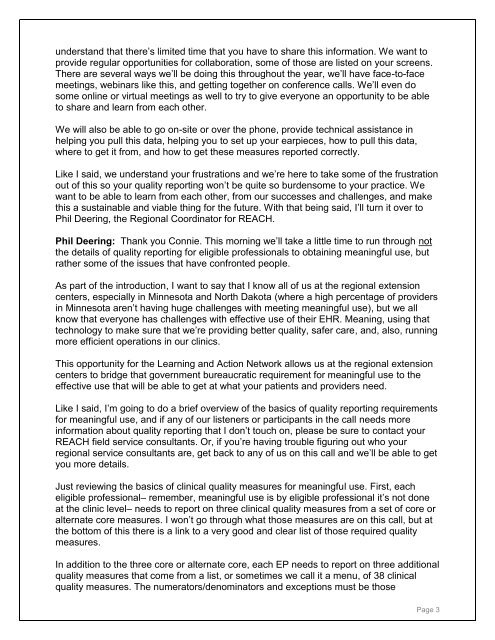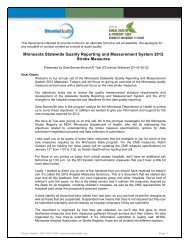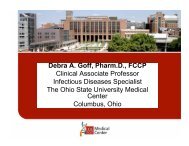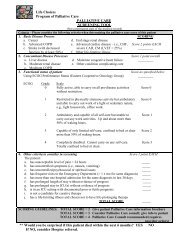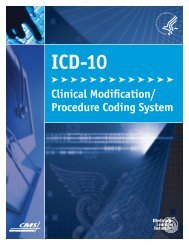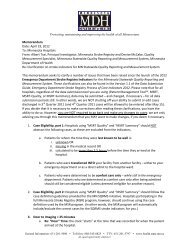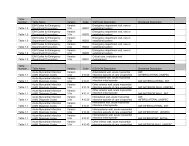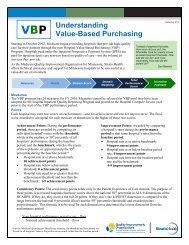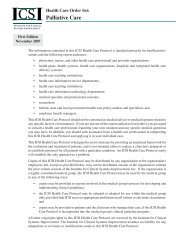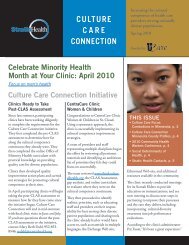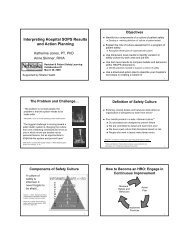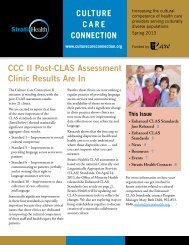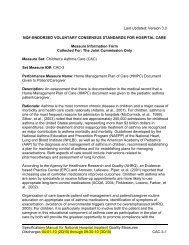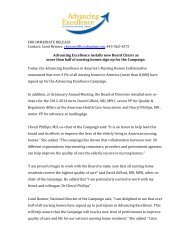Webinar Transcript Template - Stratis Health
Webinar Transcript Template - Stratis Health
Webinar Transcript Template - Stratis Health
Create successful ePaper yourself
Turn your PDF publications into a flip-book with our unique Google optimized e-Paper software.
understand that there’s limited time that you have to share this information. We want to<br />
provide regular opportunities for collaboration, some of those are listed on your screens.<br />
There are several ways we’ll be doing this throughout the year, we’ll have face-to-face<br />
meetings, webinars like this, and getting together on conference calls. We’ll even do<br />
some online or virtual meetings as well to try to give everyone an opportunity to be able<br />
to share and learn from each other.<br />
We will also be able to go on-site or over the phone, provide technical assistance in<br />
helping you pull this data, helping you to set up your earpieces, how to pull this data,<br />
where to get it from, and how to get these measures reported correctly.<br />
Like I said, we understand your frustrations and we’re here to take some of the frustration<br />
out of this so your quality reporting won’t be quite so burdensome to your practice. We<br />
want to be able to learn from each other, from our successes and challenges, and make<br />
this a sustainable and viable thing for the future. With that being said, I’ll turn it over to<br />
Phil Deering, the Regional Coordinator for REACH.<br />
Phil Deering: Thank you Connie. This morning we’ll take a little time to run through not<br />
the details of quality reporting for eligible professionals to obtaining meaningful use, but<br />
rather some of the issues that have confronted people.<br />
As part of the introduction, I want to say that I know all of us at the regional extension<br />
centers, especially in Minnesota and North Dakota (where a high percentage of providers<br />
in Minnesota aren’t having huge challenges with meeting meaningful use), but we all<br />
know that everyone has challenges with effective use of their EHR. Meaning, using that<br />
technology to make sure that we’re providing better quality, safer care, and, also, running<br />
more efficient operations in our clinics.<br />
This opportunity for the Learning and Action Network allows us at the regional extension<br />
centers to bridge that government bureaucratic requirement for meaningful use to the<br />
effective use that will be able to get at what your patients and providers need.<br />
Like I said, I’m going to do a brief overview of the basics of quality reporting requirements<br />
for meaningful use, and if any of our listeners or participants in the call needs more<br />
information about quality reporting that I don’t touch on, please be sure to contact your<br />
REACH field service consultants. Or, if you’re having trouble figuring out who your<br />
regional service consultants are, get back to any of us on this call and we’ll be able to get<br />
you more details.<br />
Just reviewing the basics of clinical quality measures for meaningful use. First, each<br />
eligible professional– remember, meaningful use is by eligible professional it’s not done<br />
at the clinic level– needs to report on three clinical quality measures from a set of core or<br />
alternate core measures. I won’t go through what those measures are on this call, but at<br />
the bottom of this there is a link to a very good and clear list of those required quality<br />
measures.<br />
In addition to the three core or alternate core, each EP needs to report on three additional<br />
quality measures that come from a list, or sometimes we call it a menu, of 38 clinical<br />
quality measures. The numerators/denominators and exceptions must be those<br />
Page 3


